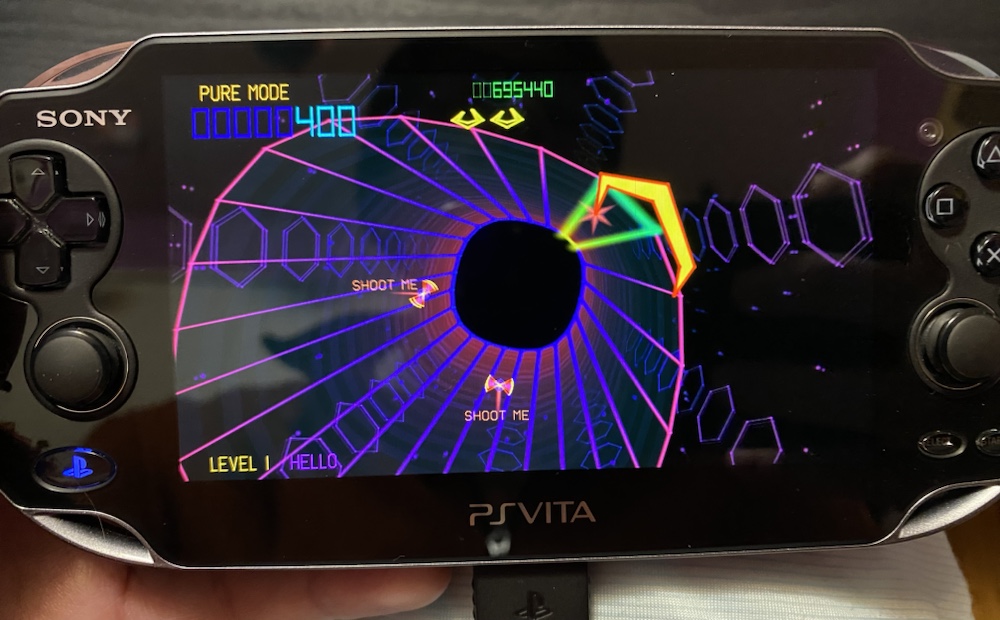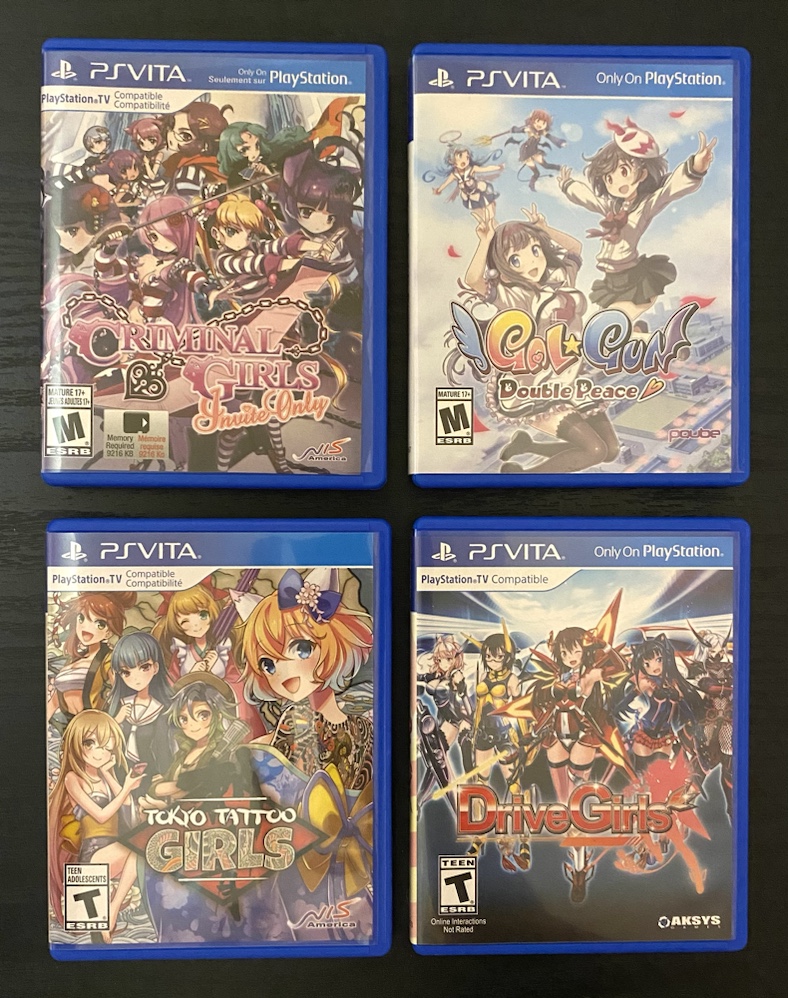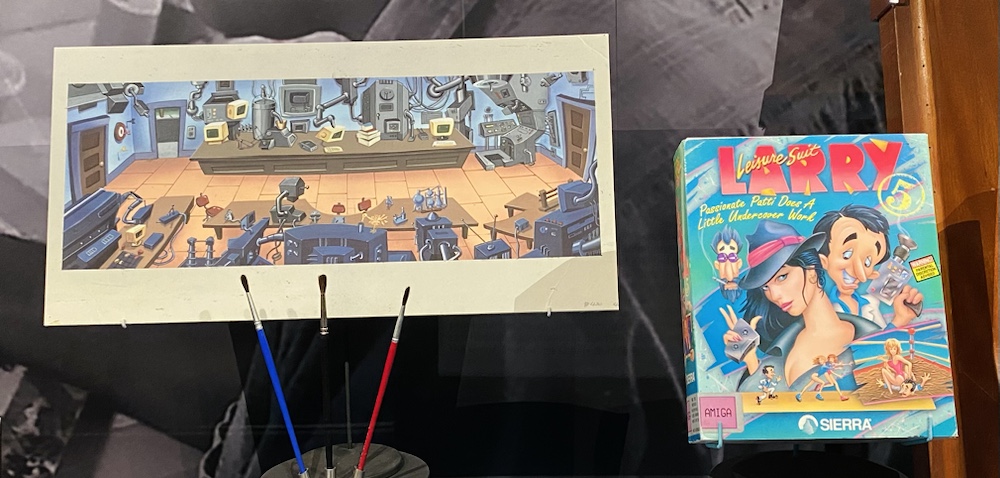This past year I kept a list of all the games I played as well as how long I played them. My notes also included short reviews/thoughts, and here they all are.
With two exceptions (noted after the game name) every game was played on Switch. The time I played each for is in parenthesis at the end (X hours) but for games that I played less than about three hours this is excluded.

Tactics Ogre Reborn: The original is a masterpiece, but this remake – while pretty – is unfortunately hamstrung by some questionable balance adjustments. I gave up when it became exceedingly grindy. (11)
Rogue Legacy 2: A 2D roguelike so addictive I had to delete it lest it suck up too much of my time. Is it better than the first one? Undecided. (15)
Katana Kami: Weird controls and floaty combat mar this C-rank rogue clone. (10)
Live A Live: This remaster of the beloved SNES multi-scenario RPG is perhaps not as good as its reputation deserves. I beat it, but had no desire to see all the multiple endings. (25)
Picross X: Picbits vs Uzboross: Not enough Picross in this frenetic puzzle game. A good time-waster regardless. (5)

Dragons Dogma: Dark Arisen: I first beat this open-world RPG on PS3 eleven years ago, and KLS beat it about five years ago on PS4. Since I’d never played the expansion I returned for another full playthrough and had an absolute blast. One of the best RPGs of all time. (95)
Crystar: Tedious combat and half-baked gameplay loop failed to salvage a somewhat interesting story in this budget action-RPG. (20)
Theatrhythm: Final Bar Line: A fiendishly addictive rhythm/RPG hybrid bathed in Final Fantasy series nostalgia. Potential game of the year! (65)
Megaman Legacy Collection: Indisputable value, but holy cow are these old games punishing! (This collection contains nine old NES Megaman games; so far I’ve only played the first one briefly.)
Arkanoid Eternal Battle: A terrible online battle royale. Almost no players meant I could barely begin a match. Emulation of the original game is poor with a warped screen and bad controls. This should have been a free download.

Dragon Quest Treasures: A fun treasure hunt game with roots in mobile games that didn’t outstay its welcome. Would have been a great 3DS game. (35)
Mary Skelter 2: Competent but ultimately repetitive dungeon crawl. Lots of systems but itemization isn’t interesting and I would have preferred pixel art monsters. (12)
Demon’s Tilt: Nearly unplayable due to overly tiny graphics and erratic screen movement. I feel this digital pinball is misplaced on Switch and is probably a much better game than I experienced.
Octopath Traveler 2: A great sequel loaded with content, fun ‘systems’ and combat. Possibly overly long! (80)
Final Fantasy (GBA): Extremely replayable and always fun. I played this one on my GB Micro during my Oz/JP trip and beat it with an unconventional melee-only party. (17)

The Legend Of Zelda: Tears Of The Kingdom: Sequel to one of the greatest games ever made that somehow manages to top the original! This game possessed me until I unlocked everything. (165)
Xenoblade Chronicles 3: Future Redeemed: Amazing conclusion to the entire Xenoblade saga. A perfectly condensed Xeno experience full of nostalgia for long-term fans. (30)
Beholgar: Fun but frustratingly buggy. I ended up watching it completed on Bard’s stream. (5)
Diablo 3: A contender for the greatest game ever made. I’d already played for hundreds of hours over the last eight years but the cravings had returned… (55)
Labyrinth of Zangetsu: Very loyal to retro dungeon crawler design including punishing difficulty. Visual style is the main appeal but wears thin quickly. While it was thin on content and a bit grindy toward the end, I still enjoyed beating it. (25)
Vampire Survivors: Insanely addictive but very repetitive. I had a great time unlocking everything and moved on. (40)
Black Tiger: A 1980s arcade favourite of mine. I downloaded this one for cheap and had a great time beating it for the first time in years.
Exed Exes: Another nostalgic favourite. I remember have strong memories of playing this one in fish’n’chip shops. It would make a good score competition game.
Progear: I’m not a fan of the graphics, or of the fact it’s a bullet hell without an avoidance/bullet eating system. Also the perspective is weird and the point bonuses should move left not down! Not one of my favourite Cave games.
Giga Wing: Amazing bullet hell shooter with a great risk/reward system. Scores in the trillions are silly though!
Varth: Fun but pedestrian shooter with an unusual shield multiple system that adds very little to the game. A relic of an era before bullet hell.
19XX: The War Against Destiny: Very fun shooter with fluid motion and lots of popcorn enemies. Weapons could have more variety. I think the scoring system has practice potential.
1944: The Loop Master: Amazing graphics but very difficult even on the easy setting. I prefer extra lives to a power-based system, and with only one life this one feels particularly punishing.
Wargroove: An Advance Wars wannabe that didn’t grab me. Feels like a fan game.

Alwa’s Awakening & Alwa’s Legacy: Retro-style Metroidvanias that are both too slow and clunky. Probably ok if you give them time, but neither grabbed me.
Final Fantasy (Pixel Remaster): Yes I beat this twice in 2023! This is a great remake for modern consoles, and I’m sure I’ll return to it again one day. (12)
Labyrinth of Galleria: The Moon Society: This wizardry-like started strong with a good, solid first section (40 hrs) but then restarts with a half-finished procedural grind (hundreds of dungeon levels?!) that sucked the life out of it. Should have been half what it is. (67)
Heroes of Hammerwatch: Content rich twin stick RPG roguelike. I played for hours and hours and felt like I’d only dipped my toe in! I beat the game with one of ten characters and barely explored the dlc. I’ll return to this one… (60)
Kotodama: The 7 Mysteries of Fujisawa: Very mundane visual novel with boring characters and boring-after-one-go match 3 puzzles. I gave up quickly.
Harvestella: Much better than expected action RPG combined with a fun farm simulator. Very deep with fun boss fights. A genuine surprise that occupied me five times longer than I expected! (95)

Fire Emblem Engage: Ironically not as ‘engaging’ as previous games in the series. Too many systems that don’t offer enough to make their inclusion worthwhile. The story feels dialed-in, but the female characters are exceptionally cute. A rare FE title that I just couldn’t get into. (22)
Boulder Dash 30th Anniverary & Boulder Dash Deluxe: A bit of fun nostalgic distraction, but got frustratingly difficult quickly. Loads of content!
Gal Guardians: Acts like a metroidvania but it’s more like an old school castlevania clone. And ultimately, a not very good one with boring enemies and unsatisfying controls. A failed attempt that I gave up on early.
Final Fantasy II (Pixel Remaster): Initially off-putting due to the weird leveling system but the boost mode of the remakes made it bearable and ultimately the game was fun (if flawed). (13)
Trinity Trigger: An action RPG that starts well but rapidly becomes a simplistic by-the-numbers game that has less ambition that many mobile games. The bosses are damage sponges to an almost absurd degree. (15)

Super Mario Bros. Wonder: Every level is unique and fun to play, and it’s hard to imagine this isn’t the peak of 2D Mario games. The ‘secret’ levels can be fiendishly difficult but are so satisfying to beat! I finished this one quicker than expected, and was surprised to find that many thought it may be too difficult! (14)
Paranormasight: Fun visual novel about people using curses to kill each other in 1980s Tokyo. It’s got a great style and the story keeps Kristin and I guessing as we play it together (we haven’t beaten it yet). Recommended! (10+?)
Final Fantasy III (Pixel Remaster): A wonderful evolution of the series, with a fun job system and a nicely paced quest. (20)
Baten Kaitos HD Remaster: Didn’t entrance me like the originals did two decades ago. I may give this a second chance one day.
Ultra Kaiju Monster Rancher: I was looking forward to this one! I bought it in Japan but sadly – despite what I read online – it didn’t have any English so I couldn’t play it 🙁
Needy Girl Overdose: Misogynistic game where you play the boyfriend of a female streamer. Basically a text adventure with a slight graphical overcoat. Vaguely interesting but many abrupt endings and it has the stink of unprofessionalism. Some will find this offensive.
Metallic Child: Short and forgettable action roguelite not even 1% as good as Hades. Tightly designed though, and notably of Korean origin. (8)
Blacksmith of the Sand Kingdom: A very fun JPRG with extensive crafting. Easy to get into but complicated at the high end. Just the right length as well. A genuine surprise! (27)

Cat Quest 2 : Entertaining RPG-lite that was a bit too easy. Very similar to the first one, but no less fun. (10)
Silent Hope: Diablo-like with multiple classes but repetitive dungeons. And yet it grabbed me hard and didn’t let go until I’d beaten it on all three difficulty levels. An unexpected joy. (48)
Monster Train First Class: Too addictive. Similar but inferior to Slay The Spire, with not as many long term goals. I unlocked everything and moved on lest it grabbed me too hard. (20)
The Messenger: Starts off as an 8-bit style platformer but becomes a 16-but style Metroidvania after a couple of hours play. A well made game with a good sense of humor but I found it a little boring and gave up. (6)
Batsugan: Insanely difficult shooter even on easiest setting. Enemy shots move almost too fast to react to. It feels like it should have a bullet-eating mechanic (but doesn’t). Ideal for the arcade; not so great at home.
Steamworld Quest: A graphically and mechanically impressive RPG that lost me quickly due to its boring story and characters. Also I feel the card mechanic (to the combat) didn’t live up to its potential.
Afterimage: A fun Metroidvania with beautiful graphics and a nice challenge level. (12)

Puzzle & Dragons (iOS): 2023 was the year I surpassed 10 years of consecutive logins (3843 days as of this post) and I still play it every day. I can’t even guess how many hours I sunk into this one in 2023, but I’m positive this is and will ever remain the game I play most in my entire life!
So there you go, a record of considerably over 1000 hours of gameplay this past year alone. I guess I’m still as much the gamer as I ever was 🙂























































